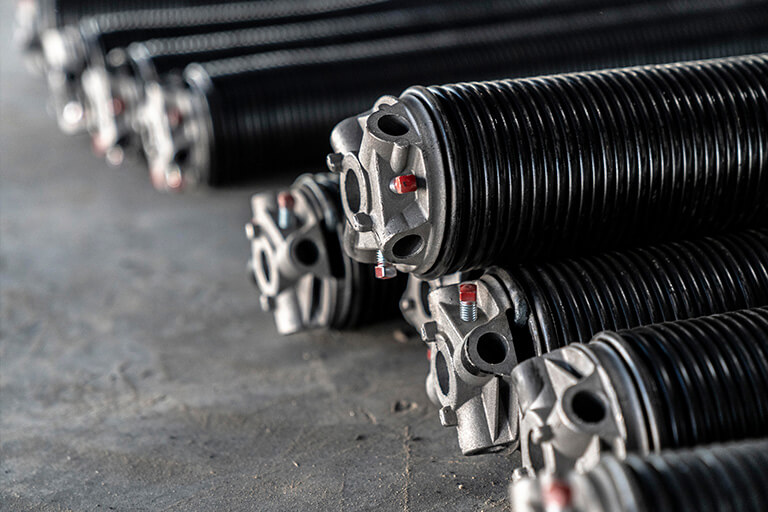How To Keep Your Garage Door Looking Sharp: A Denver Pro’s Guide to Exterior TLC
Hey neighbors! Let’s talk about that giant metal canvas greeting you every time you pull into the driveway—your garage door. We get it; washing the car feels rewarding, but the door? Not so much. Yet, neglecting it is like buying a fancy grill and never cleaning the grates. At Clearview Garage Doors here in Denver, we’ve seen doors go from “meh” to magnificent with just a little know-how. And trust us, a clean, well-maintained door doesn’t just look good—it lasts longer and saves you cash on repairs.
Why Your Garage Door’s Finish Deserves Attention
First, let’s squash the myth: garage doors aren’t “set it and forget it.” Denver’s wild weather—blazing sun, hailstorms, and our infamous freeze-thaw cycles—wreaks havoc on finishes. Peeling paint or grimy panels aren’t just eyesores; they expose your door to rust, warping, and moisture damage. And if you’ve got insulated garage doors? That grime traps moisture against the seals, making your insulation about as useful as a screen door on a submarine.
Fun story: Last summer, a customer called us for garage door spring replacement after their door started groaning. Turns out, years of dirt buildup had corroded the springs. A simple wash could’ve saved them the cost of emergency garage door spring repair. Lesson learned?
Gathering Your Gear: The No-Nonsense Toolkit
You don’t need a pressure washer or industrial chemicals. In fact, those can strip paint! Here’s our battle-tested list:
- Mild Soap: Dish soap diluted in warm water. Skip the bleach—it’s overkill.
- Soft Brushes: A long-handled brush for panels, a soft-bristle toothbrush for crevices.
- Microfiber Cloths: For drying and buffing.
- Garden Hose: With a gentle spray nozzle.
- Protective Gear: Gloves and goggles (because soap in the eye isn’t a vibe).
Pro Tip: If your door has windows, use vinegar-water for streak-free shine.
The Step-by-Step Spa Treatment for Your Door
Step 1: Rinse Away the Grit
Hose down the door to loosen dirt. Start top-to-bottom so grime doesn’t streak. Ever tried wiping a dirty car? Same logic.
Step 2: Soapy Scrub Session
Dip your brush in soapy water and gently scrub panels, tracks, and hardware. Focus on grimy spots like handles and hinges. Rhetorical question: Why do hinges collect more gunk than a toddler’s pockets? We may never know.
Step 3: Rinse & Dry Like a Pro
Rinse thoroughly—soap residue attracts dust. Dry with microfiber cloths to prevent water spots. Denver’s hard water? It’s brutal on finishes if left to evaporate.
Step 4: Seal the Deal
Once dry, inspect for wear. If seals look cracked or brittle, consider garage door gasket installation or weather stripping replacement. FYI, fresh seals boost energy efficiency—big win for insulated garage doors.
Beyond Washing: Maintenance That Matters
Cleaning is step one. Protecting is where the magic happens:
- Inspect Hardware Monthly: Check springs, rollers, and cables. Sagging? Squeaking? That’s your cue for garage door maintenance—or a pro visit.
- Touch Up Paint/Finish: Nicks happen! Use manufacturer-matched paint to prevent rust.
- Lubricate Moving Parts: Silicone spray on rollers/tracks twice a year. Grease attracts dirt—don’t overdo it!
- Test Balance & Safety Features: Disconnect the opener and lift the door manually. If it doesn’t stay put, your springs might need attention.
When DIY Won’t Cut It:
- Rust patches spreading like gossip.
- Cracks or dents deeper than a credit card.
- Opener struggles (that “uh-oh” grinding noise).
These scream “call Clearview.” We handle everything from garage door installation to commercial overhead door repair. Trying to DIY garage door spring services? Don’t. Those things pack enough tension to launch a fridge.
Common Finish Fails (and How to Dodge Them)
| Problem | Cause | Prevention Tip |
|---|---|---|
| Fading Paint | UV exposure | Use UV-resistant paint; clean regularly to slow oxidation. |
| Rust Spots | Chipped paint + moisture | Touch up scratches ASAP; keep seals intact. |
| Grime Buildup | Dirt, pollen, road salt | Wash every 3 months; rinse after snowstorms. |
| Seal Failure | Age/weather cracking | Replace weather stripping every 2–3 years. |
FAQ: Your Burning Questions, Answered
Q: How often should I clean my garage door?
A: Aim for quarterly—especially after winter. Denver’s road salt is a silent finish-killer.
Q: Can I use a pressure washer?
A: Hard no. It blasts off paint and forces water under seals. Stick to gentle sprays.
Q: What if my door has serious damage?
A: If cleaning reveals structural issues—dents, warping, spring fatigue—get a pro assessment. Clearview Garage Doors offers free quotes. The price of neglect always beats the cost of repair.
Q: Should I wax my garage door?
A: IMO, skip it. Modern finishes don’t need wax, and it attracts dust. Just wash and dry!
Wrapping Up: Keep It Clean, Keep It Clearview
Look, we’re all busy. But spending 30 minutes every few months protects your door’s looks, function, and lifespan. Think of it like flossing—annoying but preventative. And if you spot trouble? We’re your Denver experts for garage door repair, new garage doors, or even commercial garage door repair.
Whether you’re Googling “garage door spring replacement near me” or just need a friendly consult, swing by Clearview Garage Doors. Because a great-looking door isn’t just curb appeal—it’s peace of mind. Now go show that door some love! 🙂










